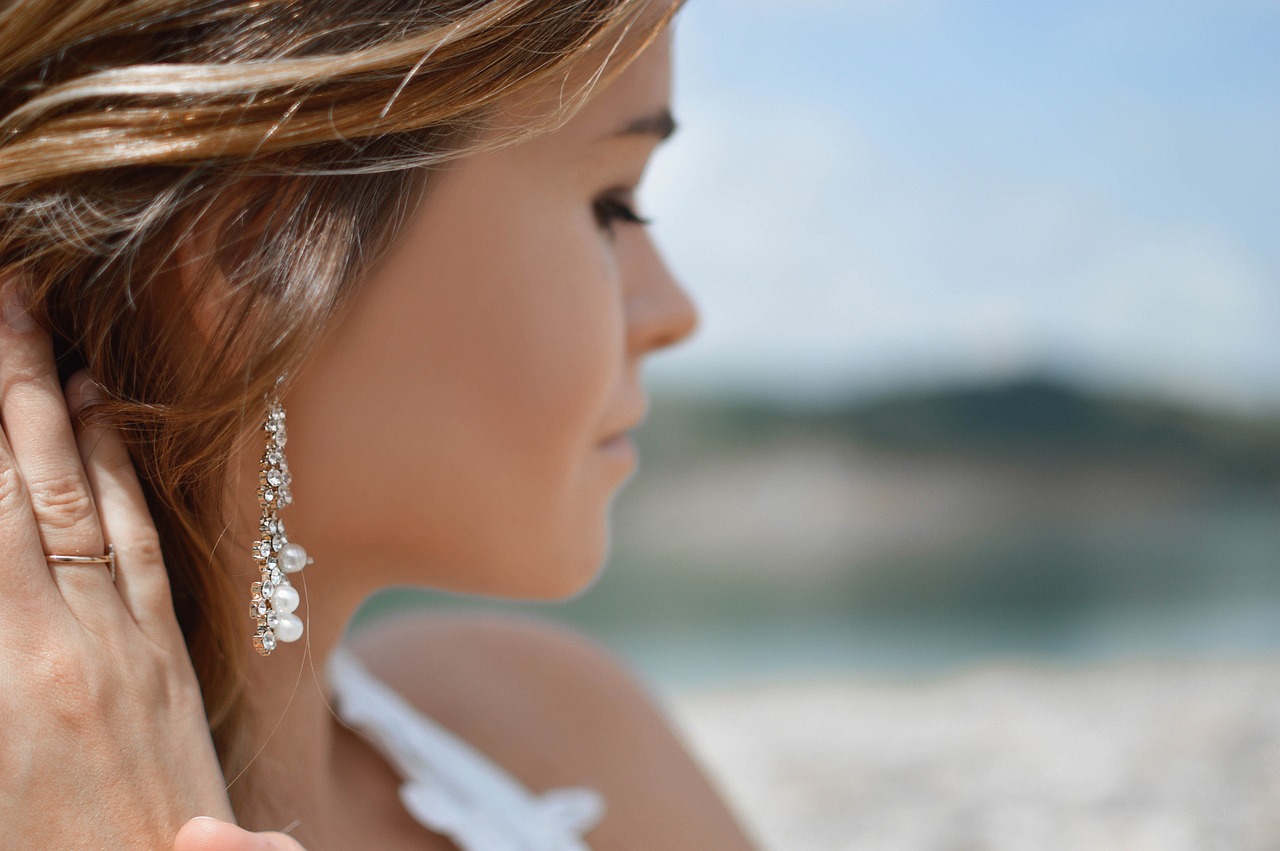Undoubtedly, earrings are the simplest yet the most popular piece of jewellery, complimenting and completing any individual`s attire. These ornaments adorn and excel the look, while usually, but not necessarily, matching other jewellery donned on the day. They come in different shapes and can adapt to almost any outfit or style.
Earrings have been with us for centuries, with evidence found in the sites of ancient civilisations. At first, before metals like gold, silver and copper were discovered, they were made out of stones, bones, wood or even seeds, to name a few.
Following the rise of the copper and bronze era, earrings enhancement was extraordinary.
Nowadays, still inspired by our early ancestors, we assimilate the know-how and expertise with avant-garde technology, utilising various natural and man-made resources to create gorgeous pairs of earrings.
Let us go through the different earrings materials which are mostly consumed in the trade of earrings.
Diamonds
Starting with the most obvious one, diamonds of course, the most precious stones of all time to be used in jewellery.
Diamonds, with their class and gleam, have the marvellous ability to make any ordinary-looking object look fabulous.
Earrings ornamented with diamonds bring elegance and posh to the entire attire. In these cases, diamonds are usually studded in pattern on the earring, or if larger diamonds are being applied, they are hanging detached on their own like we find in danglers or drop earrings.
Gold
Typically, one of the most habitual materials used for earrings is gold, which is not only stunning but it holds medicinal properties, and that`s why it is commonly found in Indian households.
Gold can also be amalgamated with other various resources to create different or more alluring styles, however it can be used on its own like say for loop earrings which are also beautiful to look at.
In its pure form, gold is very soft to make jewellery out of, which is why sometimes other materials like copper are mixed with it to obtain rigidity and malleability, enabling the piece of jewellery to be moulded into striking earrings.
Silver
Silver, although not as popular as gold in the earrings sector, still holds its presence, and has antibacterial properties which make it an excellent metal for jewellery.
Precious stones like diamonds, or semi-precious ones like glass crystals, are usually combined with silver to create that sophisticated appearance.
Silver earrings are good-looking and could be an impeccable option to complete a classy expression to attend a ceremonial occasion.
As in the case of gold, even silver is naturally soft thus it is often mixed with copper to make it more flexible.
Gemstones
Another prevalent material utilised for earrings, which can also be combined with silver and gold creating contrast.
These colourful stones come in various forms and dimensions which make them very flexible when it comes to styling.
Smaller gemstones are usually utilised in tandem with others to create that exclusive appearance, while bigger gemstones are mostly used as the main attraction, typically dangling solo or as lone pieces.
Precious gemstones like sapphire, ruby, quartz and emerald differ in colour, so combinations are endless.
Enamel
These are considered as artificial earrings as enamel is not naturally found in nature.
Enamel is popular not only for its flexibility as it can be moulded in any shape or size without much difficulty, but also for its price tag as it is much more affordable than other materials used for earrings.
The younger generation experiments more in fashion, so enamel flexibility and price is ideal for them, making the whole process more affordable. Moreover, enamel earrings have no limits as they can be styled with any outfits.
Glass
Even this material is considered as artificial, plus it is a well-known fact that glass can be formed in different shapes and sizes, making exclusive designs also for earrings.
Glass can also be coloured, so it is popular among experimental fashionistas, which are after particular arrangements at reduced price range when compared with other more precious materials in the offing.
Mirror
Considered as a subclass to glass earrings, we find that mirror as a material isn`t available in different colours, and it`s less versatile than other resources too, so it is somewhat limited when crafted, when combined with other elements or even on its own.
However, the number of proportions and contours that mirror material comes in plays a key role while designing.
Beads
This material is found in great quantity, with varieties of colours and shapes, so it is more straight forward to create designs with, the combinations are limitless.
When it comes to making a fashion testimonial, beads earrings are one of the most widespread materials to turn to, as they can be worn with countless garments without too much thought.
Ceramic
Available in many different designs and matching well with diverse outfits, ceramic earrings add that extra option when it comes to styling.
They are one of the easiest to create, as they are casted and mass produced with a specialised appropriate mould.
Pearls
Finally, last but definitely not least – pearls. These are tricky to harvest which makes them one of the most coveted materials for earrings.
Although simple-looking, pearls enrich most plain earrings, adding class, elegance and a holistic sense of luxury and royalty to the whole look. However, pearl earrings are also very adaptable and can be designed for any ensemble and occasion really.
Pearls can also be combined with other materials or even with other pearls for a different attire, but mostly are utilised on their own.
In Conclusion
Although there exist other materials, we trust that we managed to cover and provide a solid guide, listing those elements which are commonly utilised when creating earrings as pieces of unique jewellery.
Ultimately, each material has its inimitable characteristics bringing a variety of styles to the consumer.
This exhaustive information will enrich your knowledge in the vast world of earrings, and assist you in your next custom.
